Autism therapies and supports: top tips and avoiding the traps
Posted on
When it comes to autism, media outlets are quick to respond to stories about “breakthrough therapies”.
One of the most recent reports revolved around an autism study in the US, which captured headlines because participants supposedly showed “dramatic behavioural improvements after receiving a dose of a single drug”.
It was suggested that children in the trial dramatically improved their social and communication skills after receiving a small dose compared to those who got a placebo.
Amaze’s response to the story was simple _ don’t get caught in the hype.
The sample size was small, with just 10 children, and there was concern over side-effects such as nausea and abdominal pain.
Professor Nicole Rinehart said, “Parents who are desperate for cures and answers start trying to get hold of these medications that could do terrible harm”.
Professor Andrew Whitehouse, Head of Autism Research at the Telethon Kids Institute, shares his tips for making therapy decisions a little less daunting:
One of the first and most important choices parents and caregivers make after a child’s diagnosis of autism is which therapy will be most suitable for their son or daughter.
Unfortunately, this choice also comes at just about the least opportune time.
During a time of considerable upheaval, families are introduced to a new and vast world populated with previously unheard of therapies, programs, acronyms and health professionals.
At a time when a tired and worried brain needs clarity the most, it must appear as it’s never been further away.
The good news is that this confusion is well-recognised, and many jurisdictions have put in place services and mechanisms to help guide families at the point of diagnosis.
For example, the Autism Advisor scheme in each state of Australia has been specifically designed to inform parents of their options at the point of diagnosis.
However, while these services can prove to be an enormous help, the choice about which therapy may suit their child will reoccur throughout their lives, and so it is very important for families to develop their own method to help make these decisions.
It is important to say loudly, clearly and repeatedly that there is no “one size fits all” approach for matching a child to a therapy. This is one of the great scientific goals for autism research, and we have reason to be optimistic for significant progress in this area over the next two decades. However, there are overarching principles that can be used as a template to assist with these challenging decisions.
1. Give yourself a break
No one is born knowing how to choose the most suitable therapy for a child with autism.
This knowledge is only acquired through experience, and this takes time. Sometimes you will make poor choices, and it is important to be gentle on yourself during these times.
Sometimes you will make great choices, and it is important to congratulate yourself on those occasions. There is nothing like a reflection on your previous stumblings to realise how far you have actually come.
Among the most important things you can do for your family is to recruit a team of supporters; people who can and will remind you of your inexperience, your progression and that this process is harder than you give it credit for.
I like to work on the “five finger” principle. Each person in your support team represents one finger.
In a time of need, you first turn to the person represented by your thumb. If you can’t get hold of them, then you turn to the person represented by your index finger, and so on.
By the time you get to your pinkie, you will have found someone who will be able to listen, baby-sit, cook dinner, or simply tell you that you’re wonderful.
2. Goal-setting
An important step in any process is to define the issue you’re addressing.
It is quite simple: if you don’t know what you’re looking for, you can’t find it. You must understand what you and your child would like to achieve through therapy, before you can find a therapy that fits that need.
Many health professionals will guide you through a goal-setting process.
If they don’t, then insist that they do. When formulating goals, first think broadly (for example, “I want my child to learn to talk”), and then think of clear and defined outcomes that will help you along that path (such as, “I want my child to use verbal language to request food and drink”).
I like to picture a staircase of ten steps. We wouldn’t expect anyone to leap the whole staircase in one bound, but taking the steps one at a time – sometimes, with one step backwards – will get us to our destination.
3. Understand the therapy
For better or worse, there is a wide choice of therapies offered for autism.
To become an expert in each and every one of these therapies is impossible, even for people who dedicate their professional lives to the study of autism.
Nevertheless, when you have narrowed down your choice to a handful of therapy programs, it is important that you do have an understanding of what is being offered.
Some simple questions that you can ask your health professional are:
• What is the therapy? You need to know what this therapy actually involves.
• What is the rationale of the therapy? You need to know why this therapy may be effective for your child.
• Is the therapy safe? You need to know that this therapy will not harm your child.
• Is the therapy effective? You need to know if there is scientific evidence that this therapy can lead to improvements .
If the answers to these questions satisfy you, then weigh up the positives and negatives of this information.
Understand the time requirements, the financial cost, and the implications of these for your family life.
Always be mindful of over-inflated claims, which are almost certainly too good to be true.
Some simple warning signs include statements of a “cure”, an apparent “one size fits all” approach to a range of conditions, excessive scientific jargon, and disproportionately high fees.
With all of this information in your back pocket, it is time to determine the fit for you and your family.
The analogy that I come back to time and again is dating: a person may be absolutely perfect, but they have to be perfect for you. The same goes for therapies and therapists.
4. Review
You can only ever make the best decision with the information you have at the time.
But it is critical to remember this information will change over time. What suited your child and family a year ago may not apply now that you are 12 months down the track.
Review your child’s progress, review the positives and negatives of the therapeutic approach, and review your family’s circumstances. Evaluate the fit and make a choice.
Whether you feel it or not, you have become an expert in autism.
Indeed, the only people more expert than you are individuals with autism themselves.
Although choosing interventions is currently an imperfect science, you and your family are in control of the process.
By having a clear understanding of your goals for therapy, as well as the positives and negatives about what any give therapy offers, you are reducing to negligible the role that luck plays in the process.
Talk, question, explore and plan. And always remember: you know more than you think you do.
A version of this Andrew Whitehouse article was published in The Conversation.



